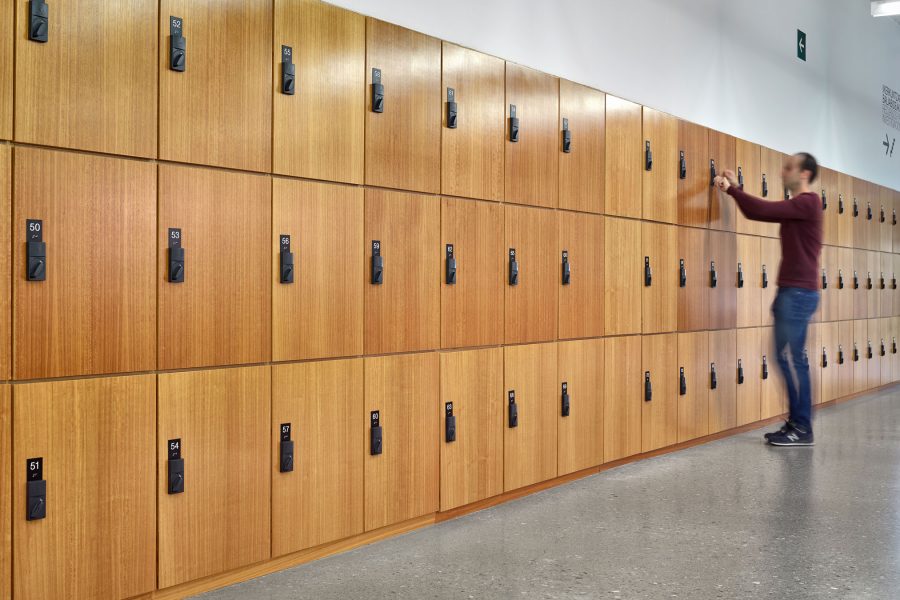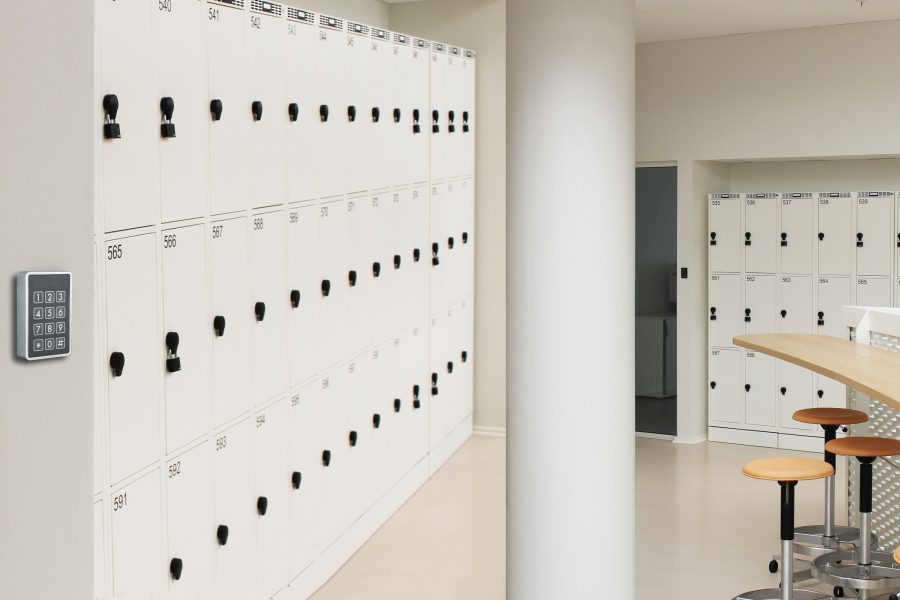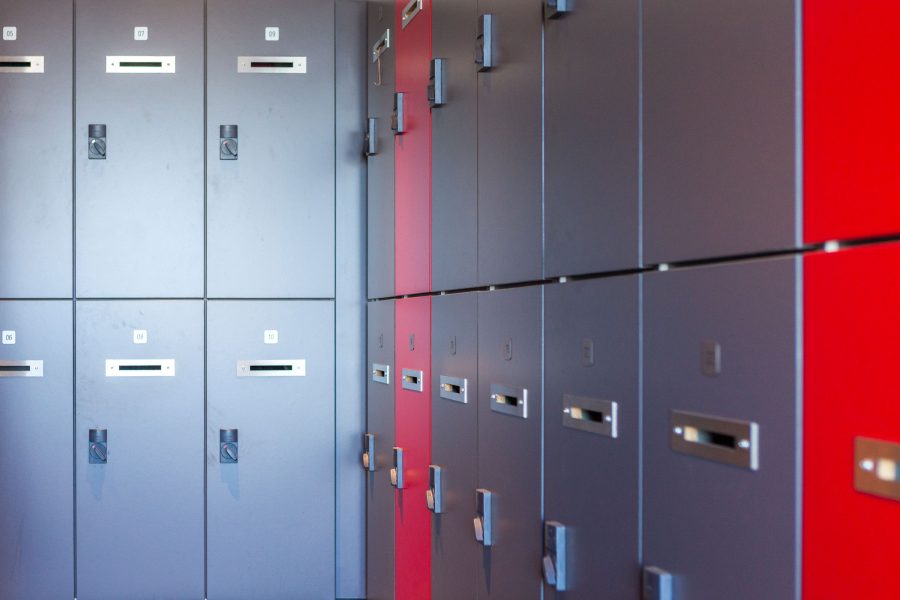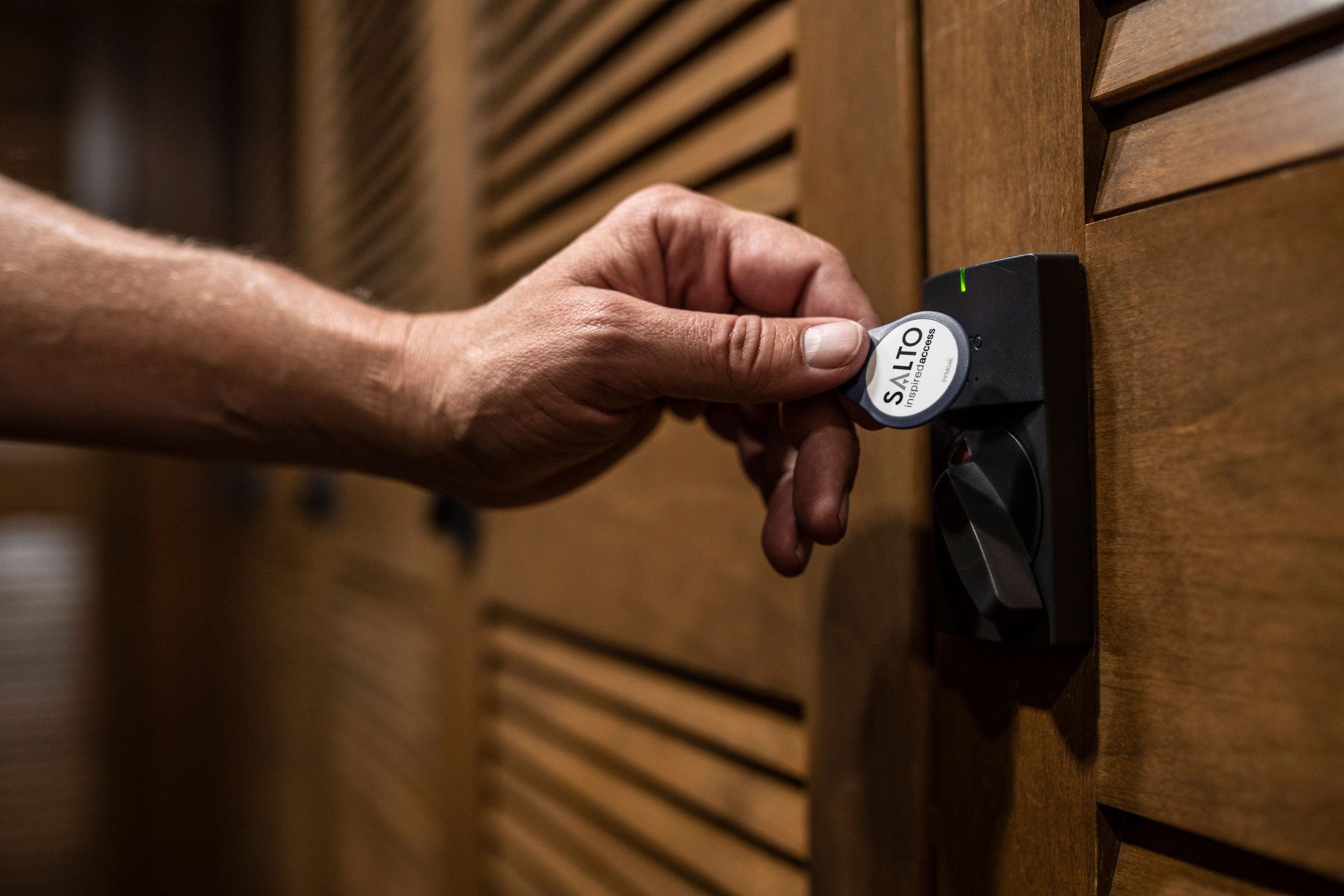Story at a glance:
- Lockers with advanced access control systems expand their utility and applications.
- Smart locks can be wire-free and installed into existing lockers, but new installations wired to a power source can also have lighting and device charging ports.
- The investment in digital lockers pays off in actual cost savings and improved user experiences.
Lockers used to be pretty much just in locker rooms. That’s what those places were called—and still are—and that locker room had a well-defined if limited purpose. Gym lockers were for your street clothes while you wore something else for exercise, plus whatever you needed to shower after.
But now lockers can be found miles away from health clubs. You’ll find them in big-box stores, in academic buildings of college campuses, in hospitals, near the entry gates of sports stadiums, and even where we live. Some come with electric charging outlets and LED lighting. And almost none depend on the old and familiar circle-dial face combination lock.
Today’s lockers come in various shapes and sizes and are useful in all kinds of ways. Locks using electronic access control technologies make them even more accessible, as they come in wired and wire-free options and make mini-storage spaces highly sought after amenities.
Salto, a maker of electronic locker locks, supports this phenomenon with smart, keyless solutions that make our lives simpler and more secure.
Locking Things Up

Photo courtesy of Salto
Locks and lockers are meant to keep valuable things secure, of course. But the growth of lockers in our lives has little to do with crime statistics. It’s much more related to convenience—storing things you can’t lug everywhere you go—or in how items are transferred from party A to party B.
In the first case, consider the traveler who has to check out of their hotel or Airbnb at 11am but who doesn’t have a flight until the evening. That person might have time to visit one more art gallery or explore an interesting neighborhood. They want something that’s logistically easy and don’t want to lug suitcases everywhere. Lockers in train stations, shipping stores, convenience stores, tourist spots, and even small retail like beauty salons are increasingly offering this service. A simple search on a wayfinding app for “package lockers nearby” will indicate their prevalence.
Students from grade school through graduate school also need places to store books, electronic devices, and personal items when on campus. Ideally those lockers have electric charging capabilities. In laboratories everything from expensive equipment to biological specimens can be stored for safekeeping or sharing via a locker.
Many of these types of lockers have existed for a long time. But with smart locking systems—which can also be applied to existing lockers—it becomes a better experience for end users as well as locker proprietors. In these cases a wire-free system can be retrofitted into the lockers, explains John Wright, engagement manager team leader at Salto. “Battery-powered, wire-free locks are suitable for retrofitting,” Wright says. “A wired system is ideal for new installations, offering features like USB charging and lighting.”
Other features of smart locks from Salto include simple installation and locker management software that provides a built-in audit trail, usage data analytics reports, encrypted communication, and emergency opening through portable programming devices.
Smart Lockers Across Settings

Photo courtesy of Salto
Another phenomenon prompting the use of lockers is the demise of the dedicated personal office or cubicle in workplaces. Even before the pandemic and the subsequent rise of work-from-home, employers were gravitating toward open office plans and “hoteling,” sometimes called hot-desk arrangements, where the desks employees use can change from day to day. Lockers provide small spaces for storing personal items, paper files, and electronics for employees who are in the physical offices one or two days per week.
Beyond those applications lockers are being used to transfer items in a secure manner. The applications are quite extensive.
Chalk much of it up to e-commerce. Package delivery times can easily be out of sync from when the recipient is home. Package delivery lockers are increasingly common in apartment complexes, office buildings, and retail locations. Amazon even has branded, dedicated pickup locations for this purpose.
Another iteration of the e-commerce phenomenon is the hybrid model, where the item is ordered online but the purchaser picks it up in-person from a brick-and-mortar location. “This is the click-and-collect model,” Wright says. “It’s how big-box retailers compete.” Instead of waiting for a delivery the next day, the consumer can pick it up in an hour or two from a locker, using an electronic key sent to a smartphone in the form of a bar code, QR code, multidigit number, or biometrics. When lockers are located outside the store, as most are, a purchaser can pick up the item after store hours.
Hospital settings have several uses for smart-lock lockers. One is simply as an employee amenity, as with other types of workplaces. Also, patients may require their own lockers for personal belongings. Equally important is the control of pharmaceutical products, sent from the hospital pharmacy to patients, which can be managed with lockers. This improves the security of drugs, can reduce virus transmission, and improves the efficiencies of hospital operations.
Sustainable Smart Lockers

Photo courtesy of Salto
The power requirements of Salto’s smart locks are quite minimal. “With lithium-powered models you can expect about a 10-year life without changing it,” Wright says. Other models that use alkaline batteries will last between three and five years, he notes.
Sustainability features from this product and company can be measured by several means. One is that electronic locking systems eliminate the material and time costs of physical keys; when those keys are lost, it’s a far more costly task to change locks and replace keys. The calculation for the return on investment, ROI, from installing a Salto system is about two years.
The Salto headquarters and manufacturing operations in Oiartzun, Spain, are a model of green manufacturing. The company’s facilities are powered with 100% clean and renewable energy from 640 onsite solar panels and power purchased from offsite renewable sources.
Salto also carefully selects the raw materials in its supply chain for carbon and other environmental factors and designs its product packaging to minimize its environmental impact. Company management is committed to consistently reduce carbon emissions, conserve energy, minimize water usage, and maximize recycling of waste.
The exercise and fitness industry are globally quite healthy, so locker room locks are not going away, but other enterprises and organizations are getting healthier, too—improving their sustainability and customer service in discovering the utility of smart access controls.

